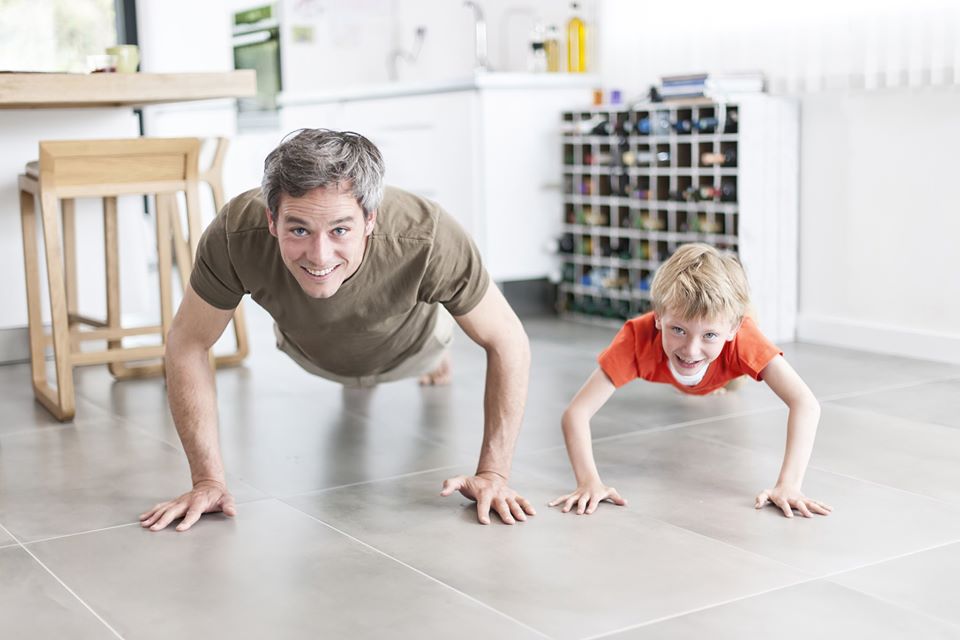
Physical activity such as walking, running, cycling, or playing any sport strengthens your bones and muscles and keeps your mind fresh. But with the Covid-19 pandemic wreaking havoc all over the world, people are forced to be caged at home. This has led to us being very less physically active, which increases health risks. The World Health Organisation (WHO) has mentioned Physical activity guidelines for people to stay fit during the lockdown.
The WHO defines physical activity as any bodily movement that is produced by skeletal muscles which require energy expenditure. It helps people to prevent diseases such as heart disease, stroke, diabetes.
“Being physically active is critical for health and well-being – it can help to add years to life and life to years,” said WHO Director-General Dr. Tedros Adhanom Ghebreyesus in a statement. “Every move counts, especially now as we manage the constraints of the COVID-19 pandemic. We must all move every day – safely and creatively.”
Guidelines for Physical Activity During Lockdown
For Children and adolescents (aged 5-17 years):
WHO statistics show four out of five adolescents, do not get enough physical activity. Children and adolescents should start by doing small amounts of physical activity, and gradually increase the frequency intensity and duration over time.
They should do at least an average of an hour per day of moderate to vigorous-intensity, mostly aerobic, physical activity, throughout the week. This improves physical fitness, cardiometabolic health, bone health, cognitive outcomes, mental health, and reduced adiposity.
WHO also recommends spending less time being sedentary and limit screen time. For 3-days a week, the children should incorporate vigorous-intensity aerobic activities, and also those that strengthen muscle and bone.

For ADULTS (aged 18–64 years):
WHO strongly recommends that all adults should undertake regular physical activity. It improves all-cause mortality, cardiovascular disease mortality, mental health, cognitive health, and sleep. The statistics show that one in four adults, do not get enough physical activity.
The WHO recommends adults to do at least 150–300 minutes of moderate-intensity aerobic physical activity; or at least 75–150 minutes of vigorous-intensity aerobic physical activity throughout the week, for substantial health benefits. Adults should also limit the amount of time spent being sedentary and replace it with physical activity that provides health benefits.
For Older Adults (aged 65 years and older):
Older adults are advised to do activities that emphasize balance and coordination, as well as muscle strengthening. They should do muscle-strengthening activities at moderate or greater intensity for two or more days a week.
They should also do at least 150–300 minutes of moderate-intensity aerobic physical activity, or at least 75–150 minutes of vigorous-intensity aerobic physical activity throughout the week. For 3 or more days a week, older adults should do varied
multi-component physical activity that emphasizes functional balance and strength training to enhance functional capacity and to prevent falls.
For Pregnant and Postpartum Women:

Physical activity during pregnancy and postpartum decreases the risk
of pre-eclampsia, gestational hypertension, gestational diabetes,
excessive gestational weight gain, delivery complications, and postpartum
depression, and fewer newborn complications, no adverse effects on birth weight;
and no increase in the risk of stillbirth.
WHO recommends that all pregnant and postpartum women without contraindication should undertake regular physical activity throughout pregnancy and postpartum. They should do at least 150 minutes of moderate-intensity aerobic physical activity
throughout the week.
The WHO also adds that Women who, before pregnancy who were physically active, can continue these activities during pregnancy and the postpartum period. They may perform Pelvic floor muscle training daily to reduce the risk of urinary incontinence. It is advised to avoid physical activity during excessive heat, stay hydrated by drinking and avoid participating in activities that pose a high risk of falling or might limit oxygenation. They should also avoid activities in the supine position after the first trimester of pregnancy.
For People living with chronic illnesses:
(cancer survivors, people living with hypertension, people living with type-2 diabetes, people living with HIV)
Adults and older adults with chronic conditions should do at least 150–300 minutes of moderate-intensity aerobic physical activity, or at least 75–150 minutes of vigorous-intensity aerobic physical activity; or an equivalent combination of moderate- and vigorous-intensity activity throughout the week.
People with chronic illnesses should also do muscle-strengthening activities for two or more days a week. For three or more days a week, they should do varied multicomponent physical activity that emphasizes functional balance and strength training.
People living with disabilities:
Children and adolescents living with disabilities should do at least an average of 60 minutes per day of moderate- to vigorous-intensity, mostly aerobic, physical activity, across the week, as well as those that strengthen muscle and bone for at least 3 days a week.
Adults living with disabilities should do at least 150–300 minutes of moderate-intensity aerobic physical activity, or at least 75–150 minutes of vigorous-intensity aerobic physical activity throughout the week. For two or more days a week should do muscle-strengthening activities. To enhance functional capacity and prevent falls, older adults living with disabilities should do varied multicomponent physical activity that emphasizes functional balance and strength training for at least three or more days a week.
Get the latest update on IPL 2021, England vs India 2021, and other cricket news. Like us on Facebook, and follow us on Twitter and Instagram for more such updates.



![[WATCH] Harshit Rana Sends Travis Head’s Stumps Flying For His First Test Wicket Harshit Rana](https://cricfit.com/wp-content/uploads/2024/11/20241122_144704-100x75.jpg)
![[WATCH]- Jasprit Bumrah Removes Khawaja And Smith In Consecutive Balls In 1st BGT Test](https://cricfit.com/wp-content/uploads/2024/11/IMG_1948-100x75.jpeg)

